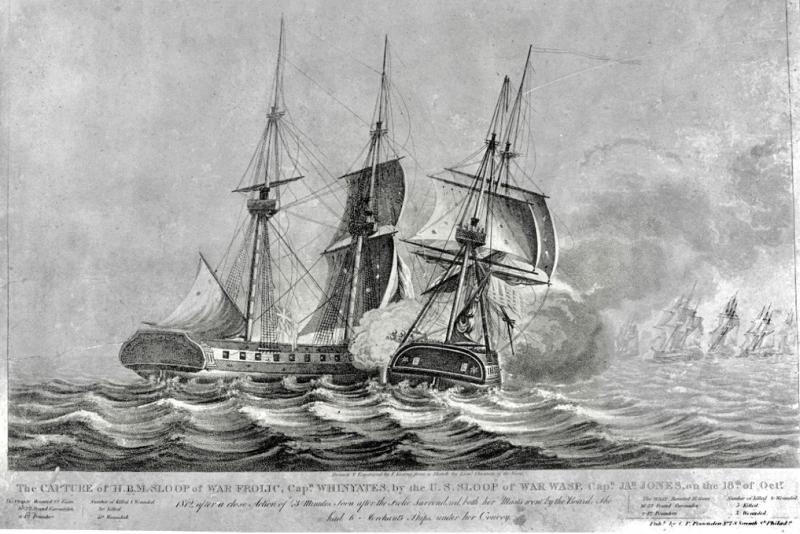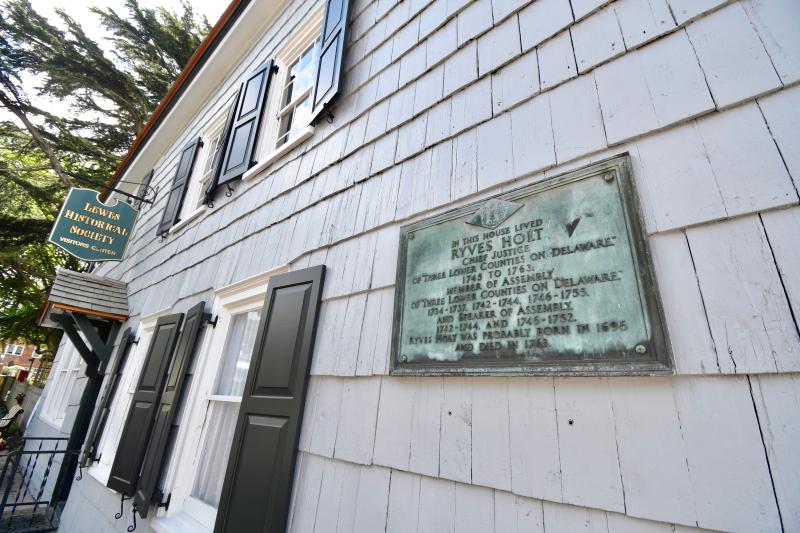Jacob Jones’ distinguished naval career
When you start to peel back the onion of Sussex County history, some amazing personalities reveal themselves.
One of those is War of 1812 naval hero Jacob Jones, who is the subject of an exhibit at the Lewes Historical Society’s Ryves Holt House Museum on Second Street.
It only seems appropriate, because Jones lived in the house with his stepmother, Penelope Holt Jones, during his boyhood from 1774-85. He was born in March 1768 in Smyrna and moved to Lewes when he was 6 years old after his father and mother died.
The house is the oldest structure in Delaware still on its original foundation.
Living in Lewes, he had a distinguished career as a doctor and clerk of the Delaware Supreme Court. He left that all behind at 31 years of age and joined the fledgling U.S. Navy as a midshipman, a rank normally assigned to boys 12-16. He served as a midshipman for 22 months.
His wife, Anna Matilda Sykes, daughter of Delaware's 15th Gov. James Sykes, died before he joined the Navy. Historians believe he joined the Navy to escape the grief he was suffering.
He ended up on ships in four wars, including the Quasi-War with France, the First and Second Barbary wars, and the War of 1812, and was commander of five ships.
Inspiration as a boy
As a 7-year-old growing up in Lewes, Jones witnessed one of the most spectacular – albeit forgotten – events in Sussex County history. The first five warships of the new Continental Navy were anchored off Lewes in 1773. During the week they were there, sailors filled the streets of Lewes dressed in their naval garb. After obtaining provisions and supplies, the Navy sought recruits to man the ships, which was not always easy. The recruits were made up of volunteers, prisoners released from jail, vagrants and deserters.
I'm sure Jones and his boyhood friends were in awe of the sailors and imagined themselves as naval heroes as they acted out battles. Little did anyone know that he would realize his dreams and become a well-respected naval hero.
That event must have had a lifelong profound impact on the young man. It just took another 24 years to realize it.
A long career
His leadership and sea skills were recognized, and he became an officer on the frigate Philadelphia, which ran aground and was overtaken by Tripolitan sailors in 1803 in the First Barbary War. Jones was held captive for nearly two years. Upon his release, he returned to sea duty even more determined to demonstrate his seamanship and courage.
In 1805, he was promoted to master commander, rising in the ranks from lieutenant and second lieutenant.
In 1810, he was given command of the sloop of war Wasp. It was on that ship that Jones was able to make a name for himself and secure his place in U.S. naval history.
Just as the War of 1812 broke out, Jones wasted no time, and on Oct. 13, he captured the British 12-gun HMS Dolphin. Five days later, on Oct. 18, he attacked a British convoy and captured the Royal Navy Frolic. Jones' ship, suffering heavy damage, was overrun by the HMS Poictiers, and he was released during a prisoner exchange. His courage did not go unnoticed.
For his actions, he was presented a Congressional Gold Medal by U.S. Congress, was promoted to captain and took command of the frigate Mohawk in the last year of the war.
He commanded the Macedonia during the Second Barbary War in 1815, and from 1816-18, the frigate Guerriere.
He was appointed commodore of the U.S. Navy in the Mediterranean (1821-23), then in the Pacific (1826-29). He was the Navy commissioner in Washington, D.C., and took command of vessels in Baltimore and New York in the 1830s and 1840s.
He was given command of the Naval Asylum in Philadelphia from 1847 until his death in 1850 at the age of 82. The asylum was a complex of buildings that served as a hospital, naval training station and as a home for retired sailors. It is luxury condos today.
He is buried in the Wilmington and Brandywine Cemetery in Wilmington.
In honor of Jones
Jones had two U.S. Navy destroyers and an escort ship named in this honor.
One of those ships, the USS Jacob Jones, a World War I-era destroyer, made news in 2022 when divers discovered if off the coast of Cornwall, England. It was the first destroyer sunk by a German U-boat in the war. After completing several rescue missions to save crews from torpedoed supply ships, the Jacob Jones fell victim to a torpedo blast Dec. 6, 1917, en route to Ireland from France. Of the 110-man crew, 64 drowned.
Jones Island in Washington state is also named in his honor.
Sources: Stars and Stripes and Naval History and Heritage Command.





























































